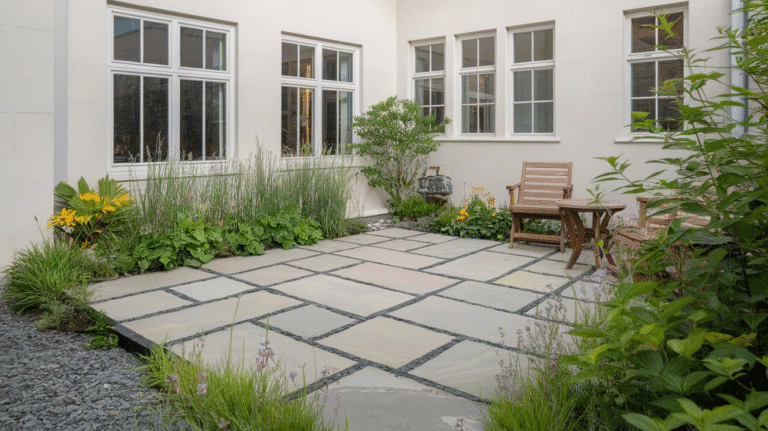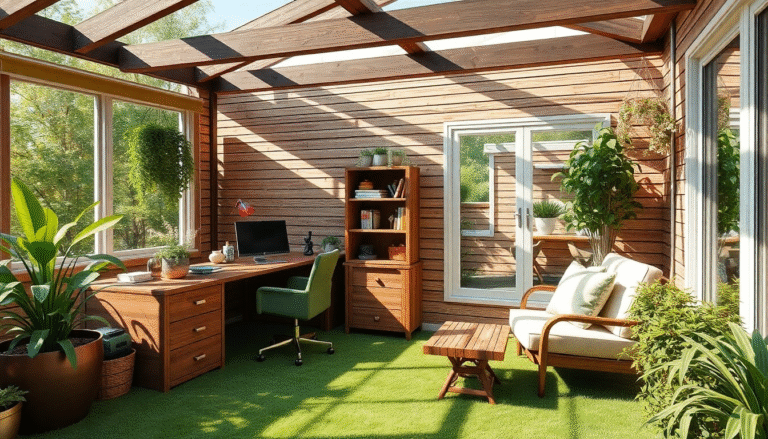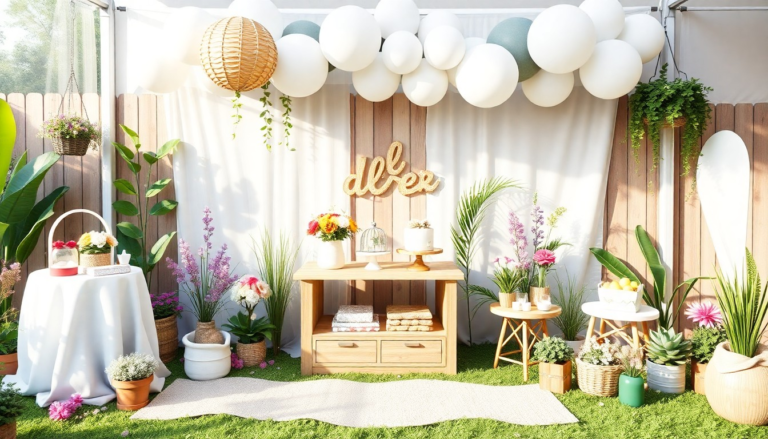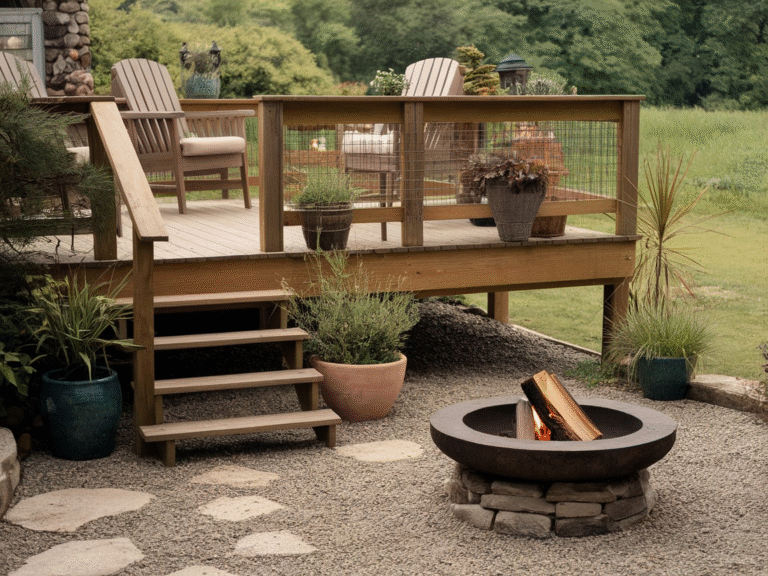18 Raised Garden Bed Ideas That Will Transform Your Backyard

If your backyard feels more like a forgotten corner of nature than a flourishing patch of paradise, let me tell you a little secret: raised garden beds are a game changer.
Think of them as the VIP lounge for your veggies, herbs, and flowers — elevated, organized, and full of potential.
Whether you’re a first-time grower with dreams of juicy tomatoes or a seasoned green thumb looking to revamp your layout, these raised garden bed ideas are packed with practicality, creativity, and a few chuckle-worthy surprises.
Let’s dig in — pun absolutely intended.
Raised Garden Beds: Why They’re More Than Just a Pretty Box
Before we explore the juicy list of 18 ideas, let’s quickly cover why raised garden beds are the darling of gardeners everywhere.
According to a study by the National Gardening Association, gardeners using raised beds report nearly double the yields compared to traditional gardening. Why? Because raised beds give you:
- Better drainage
- Improved soil control
- Fewer weeds
- Easier access (no more bending like you’re doing yoga in mud)
- Protection from pests
And let’s be honest — they just look tidy and intentional. Now, on to the creative juice.
1. Classic Wooden Raised Beds
Start simple. A rectangular cedar or redwood bed never goes out of style. Wood is naturally rot-resistant, aesthetically warm, and blends effortlessly with most landscapes.
💡 Tip: Choose untreated wood to avoid chemicals leaching into your food. Cedar lasts up to 10-15 years even without treatment.
Personal anecdote: I built my first raised bed out of old fence panels. It wasn’t pretty, but my lettuce didn’t mind — and neither did the neighbors who kept asking for extra harvest.
2. Corrugated Metal Beds for Industrial Vibes
If you’re into a more modern or industrial look, mix wood framing with corrugated metal panels. They’re sleek, durable, and give off serious backyard-farmhouse-chic energy.
They heat up faster in spring, which means earlier planting. Just don’t place them in full sun in scorching climates — your carrots might think they’re in a sauna.
3. Tiered Raised Beds for Small Spaces
Tiered beds are like bleachers for your plants. They maximize vertical space and work wonders on slopes. Each level can hold different plants based on light and water needs.
Bonus: They add instant drama to a flat yard. Think Broadway, but with basil.
4. Cinder Block Garden Beds
Cheap? Check. Easy to build? Yep. Durable? Like a concrete bunker.
Cinder blocks can be arranged into any shape, and the holes are perfect for planting herbs or flowers. Paint them for extra flair. Or let moss grow for that “forgotten ruins” look — very on trend.
Statistic: According to HomeAdvisor, cinder blocks cost about $1.50 each, making this one of the most budget-friendly options.
5. Elevated Planter Boxes
Great for seniors or anyone with back problems. These are like raised beds on stilts. You can even garden while seated.
Use them on patios, balconies, or small yards where ground beds aren’t an option. Look for kits with drainage holes and sturdy legs.
I made one for my grandmother, and now her morning routine includes gossiping with her begonias. They’ve yet to talk back — thankfully.
6. Straw Bale Raised Beds
This is one of my favorite low-cost hacks. Arrange bales of straw in a rectangle, fill the middle with soil, and boom — instant raised bed. You can even grow directly in the bales!
As they decompose, they feed your soil. Win-win. Just water them generously at first and avoid hay bales (they contain seeds).
It’s a little messy but wonderfully rustic — like growing veggies at a Renaissance fair.
7. U-Shaped Beds for Maximum Reach
Ever struggle to reach the center of a large raised bed without stepping in it? Enter the U-shaped bed. It hugs you like a garden embrace, letting you access all sides easily.
Perfect for larger plots or family gardens. One side for kids’ veggies, one for yours, and the middle for common ground — perhaps peace talks over zucchini.
8. Brick or Stone Raised Beds
If permanence is your thing, go with brick or natural stone. They’re elegant, weatherproof, and act as thermal mass — keeping your soil warm longer into the season.
They cost more and take effort, but they’ll outlive most other beds. Think of them as the garden version of a grandparent’s cast iron skillet — dependable and time-tested.
9. Wattle Raised Beds
Wattle is an ancient technique of weaving thin branches (like willow or hazel) into walls. It’s affordable, sustainable, and utterly charming.
These beds look like they belong in a fairy tale — and they’re surprisingly strong. They work great for flowers, herbs, or shallow-rooted crops.
I once made one after binge-watching medieval shows. Spoiler alert: My radishes did not join a joust.
10. Galvanized Stock Tanks
These farm-store finds are the hipster cousin of raised beds. Sturdy, stylish, and ready to plant. Drill a few holes in the bottom, fill with gravel, then soil.
They last decades and can be found in various sizes. Bonus: they’re portable if you ever move.
Be warned: they can heat up fast in direct sunlight. Use mulch or paint them a lighter color if needed.
11. Modular Raised Beds
These are made from interlocking panels, often plastic or composite, that snap together like adult LEGO. Perfect for renters or indecisive gardeners.
They’re lightweight, often tool-free, and easy to expand. Start with a square — grow into a garden empire.
12. Pallet Raised Beds
Pallets are everywhere — and free. With some nails and elbow grease, you can create a rustic raised bed for cheap.
Choose heat-treated pallets (marked HT) to avoid chemicals. You can leave the slats or remove them to make open frames.
Sustainability stats: Repurposing one pallet saves roughly 2.8 kg of carbon emissions compared to landfill disposal.
13. Vertical Raised Beds
Limited space? Think up instead of out. Stack planters vertically, or build a wall with multiple levels. Great for herbs, lettuce, and strawberries.
These are ideal for balconies or narrow yards and make harvesting a breeze. Just don’t overwater — gravity isn’t forgiving with runoff.
14. Round Raised Beds
Square is common, but round beds can be visually stunning. Use logs, metal, or stone to shape them. Round shapes encourage circular planting patterns — great for companion planting.
They also provide 360-degree access. Practical and beautiful — like a garden Beyoncé.
15. Keyhole Raised Beds
A keyhole bed includes a center compost basket with pathways allowing access. As compost breaks down, it feeds the surrounding soil — a genius permaculture idea.
Popular in hot, dry climates like Africa, where every drop of compost tea is precious.
Add a compost bin in the middle, and your garden literally eats its own leftovers. Delicious and efficient.
16. Recycled Materials Raised Beds
Why buy new when you can repurpose? Old bathtubs, dresser drawers, wine crates, even car tires (sealed properly) can become unique raised beds.
Just make sure the material is food-safe if you’re growing edibles.
One year, I turned an old canoe into a lettuce bed. I called it the S.S. Romaine. My neighbors either loved it or thought I’d lost it. Either way — great salad.
17. Cold Frame Raised Beds
Extend your growing season by adding a lid or cold frame to your raised bed. You’ll create a mini greenhouse perfect for early spring or late fall planting.
Use clear polycarbonate or old windows hinged to open easily. Add a thermometer to monitor heat.
Stats: Cold frames can raise soil temps by 5–10°F and extend your growing season by 4–6 weeks.
18. Children’s Garden Beds
Get kids involved with pint-sized raised beds just for them. Make them colorful, plant fun crops (like mini pumpkins or snap peas), and add signs with their names.
Gardening teaches responsibility, patience, and a little magic. Watching a seed become a sunflower is basically wizardry to a 5-year-old.
Bonus: Kids who garden eat 30% more fruits and vegetables than those who don’t, according to the American Journal of Public Health.
Final Thoughts: Pick Your Plot and Grow Boldly
Your garden is your story — every bed a new chapter. Whether you build with blocks, bales, pallets, or premium cedar, the magic lies in getting your hands dirty and watching something grow.
Raised beds give you control, accessibility, and beauty — like putting your plants on a pedestal they totally deserve.






